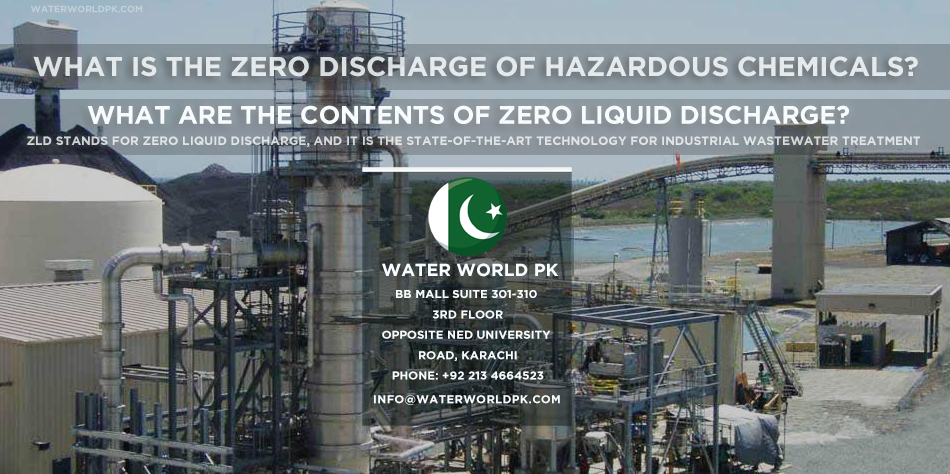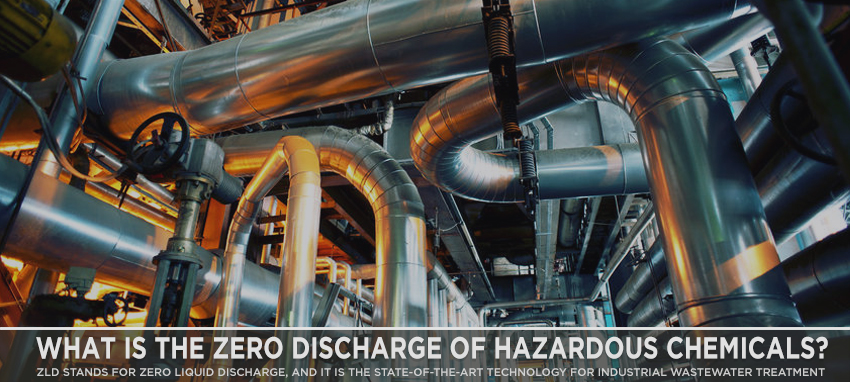- September 10, 2021
- Posted by: admin
- Category: Zero Liquid Discharge

What Is the Zero Discharge Chemical?
ZLD stands for Zero Liquid Discharge, and it is the state-of-the-art technology for industrial wastewater treatment. Zero Liquid Discharge is a treatment process that recovers the water from the solution and concentrates the solid waste or resourced material.
The ZLD technology was first created for a power plant in Gainesville, Florida, and then adopted worldwide. ZLD’s effluent treatment application aims to minimize wastewater and generate clean water for reuse while recovering valuable resources from wastewater, Such as NaCl and Na2SO4, which can be sold or reused in industrial processes to treat industrial wastewater.
What Are the Contents of Zero Liquid Discharge?
A closed-loop cycle with no discharge is known as zero liquid discharge. Thermal (evaporation), membrane (reverse osmosis), electrodialysis, forward osmosis, and membrane distillation are all common methods used in this system.
The making of a ZLD involves the following:
- Physiochemical and biological pretreatment
- Membrane processes, including Reverse Osmosis
- Thermal processes, like crystallizer and evaporator
How Does a ZLD Treatment System Work?
01 – Pretreatment and Conditioning
Simple objects that would otherwise foul or scale the subsequent treatment procedures are eliminated in the pretreatment step through filtration or precipitation. In a clarifier, metals, hardness, and silica are precipitated.
During the coagulation process, bulk suspended particles are eliminated. The most often used coagulates include alum and poly aluminum chloride. Water enters the flocculation chamber once the coagulation process is completed.
The water and flocculated debris are then sent to a gravity settler to settle slowly. The amount of material in the feed determines whether additional reactors or chemistry are required for metal or silica reduction. As a result, the pretreatment stage should be given careful consideration for a successful ZLD system.
02 – Phase-One Concentration
The pretreated water is passed through a reverse osmosis process, which removes the bulk of the dissolved solids. In contrast to RO, brine concentrators remove dissolved particles while also managing high salt concentrations in brine.
Another membrane method that can be employed at this stage of ZLD is electrodialysis. When all of these procedures are combined, the stream can be concentrated and up to 80% of the water content can be removed.
03 – Crystallization/Evaporation
This stage generates a solid after the concentration step is completed. Deaeration can be used to liberate dissolved oxygen, carbon dioxide, and other non-condensable gases during this process. The residual waste is then put through a crystallizer, evaporating all of the water and boiling it until all of the impurities crystallize out and are purified as solid.
04 – Solid Waste Treatment/Recycled Water Distribution
The treated water can be reused if it is sufficiently cleansed to be used in the operations. A dewatering technique will be used to produce a solid cake from the solid waste created.
Being a developing country, Pakistan has a lot of room for ZLD to address its water scarcity problem while also conserving water resources and the environment. The industrial sector, which includes textiles, food, beverages, power generation, and petrochemicals, is the primary application area for ZLD. However, for efficient and full-scale applications in the country, considerations such as capital, operation costs, and land must be fully considered.


